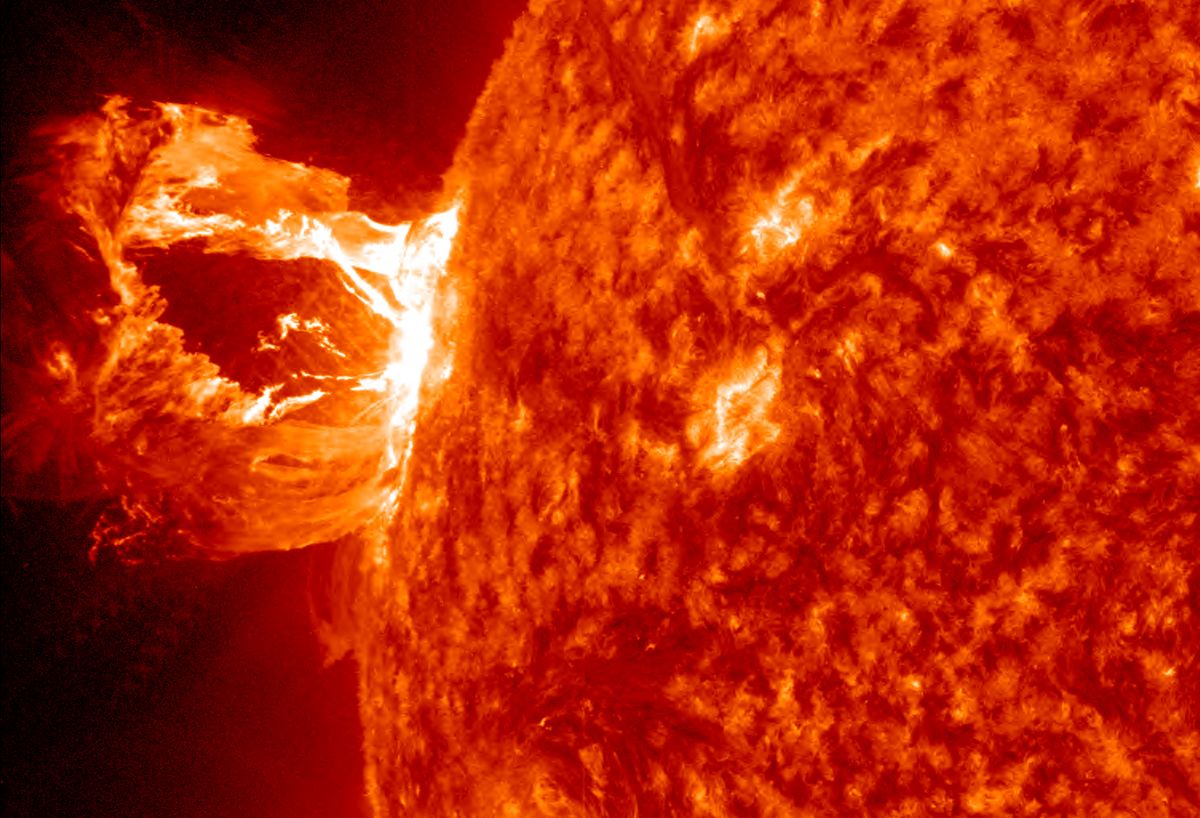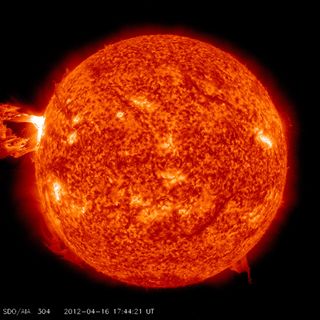Spectacular Solar Flare Erupts From the Sun

The sun erupted in an amazing solar flare today (April 16), unleashing an intense eruption of super-heated plasma that arced high above the star's surface before blasting out into space.
The powerful solar flare occurred at 1:45 p.m. EDT (1745 GMT) and registered as a moderate M1.7-class on the scale of sun storms, placing it firmly in the middle of the scale used by scientists to measure flare strength. The storm is not the strongest this year from the sun, but photos and video of the solar flare captured by NASA spacecraft revealed it to be an eye-popping display of magnetic plasma.
"Great eruption happening on the sun now," scientists with NASA's Solar Dynamics Observatory (SDO) wrote in a Twitter post.
The solar flare erupted along the sun's eastern limb (its left side) from an active region that may also be responsible for solar storm activity observed on Sunday, SDO mission officials said. The flare kicked up a massive amount of solar plasma in an explosion known as a coronal mass ejection, or CME.
"Such eruptions are often associated with solar flares, and in this case an M1 class (medium-sized) flare did occur at the same time, though it was not aimed toward Earth," officials with NASA's Goddard Space Flight Center in Greenbelt, Md., explained in an image description. The Goddard center oversees the sun-monitoring SDO mission.
When aimed at Earth, strong solar flares and CMEs can supercharge the planet's auroras, also known as the northern and southern lights. Extremely powerful CMEs can pose a danger to astronauts and satellites in space, as well as power grids, navigation and communications systems on Earth.

Astronomers measure solar flares on a letter scale, with the strongest events falling into three categories: C, M and X. C-class solar flares are the weakest events, with the X-class sun storms marking the most powerful events on the sun.
Sign up for the Live Science daily newsletter now
Get the world’s most fascinating discoveries delivered straight to your inbox.
The sun is currently in an active phase of its 11-year solar weather cycle and is expected to reach its peak activity in 2013. The current solar weather cycle is known as Solar Cycle 24.
This story was provided by SPACE.com, a sister site to LiveScience. You can follow SPACE.com Managing Editor Tariq Malik on Twitter @tariqjmalik. Follow SPACE.com for the latest in space science and exploration news on Twitter @Spacedotcom and on Facebook.

Tariq is the editor-in-chief of Live Science's sister site Space.com. He joined the team in 2001 as a staff writer, and later editor, focusing on human spaceflight, exploration and space science. Before joining Space.com, Tariq was a staff reporter for The Los Angeles Times, covering education and city beats in La Habra, Fullerton and Huntington Beach. He is also an Eagle Scout (yes, he has the Space Exploration merit badge) and went to Space Camp four times. He has journalism degrees from the University of Southern California and New York University.












